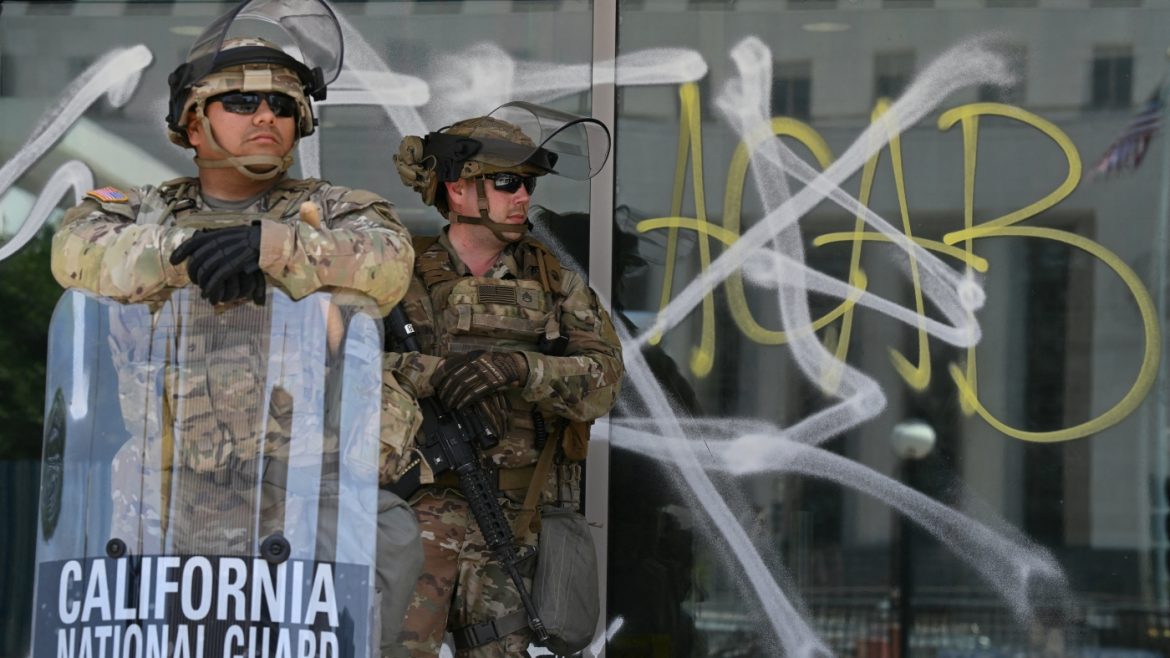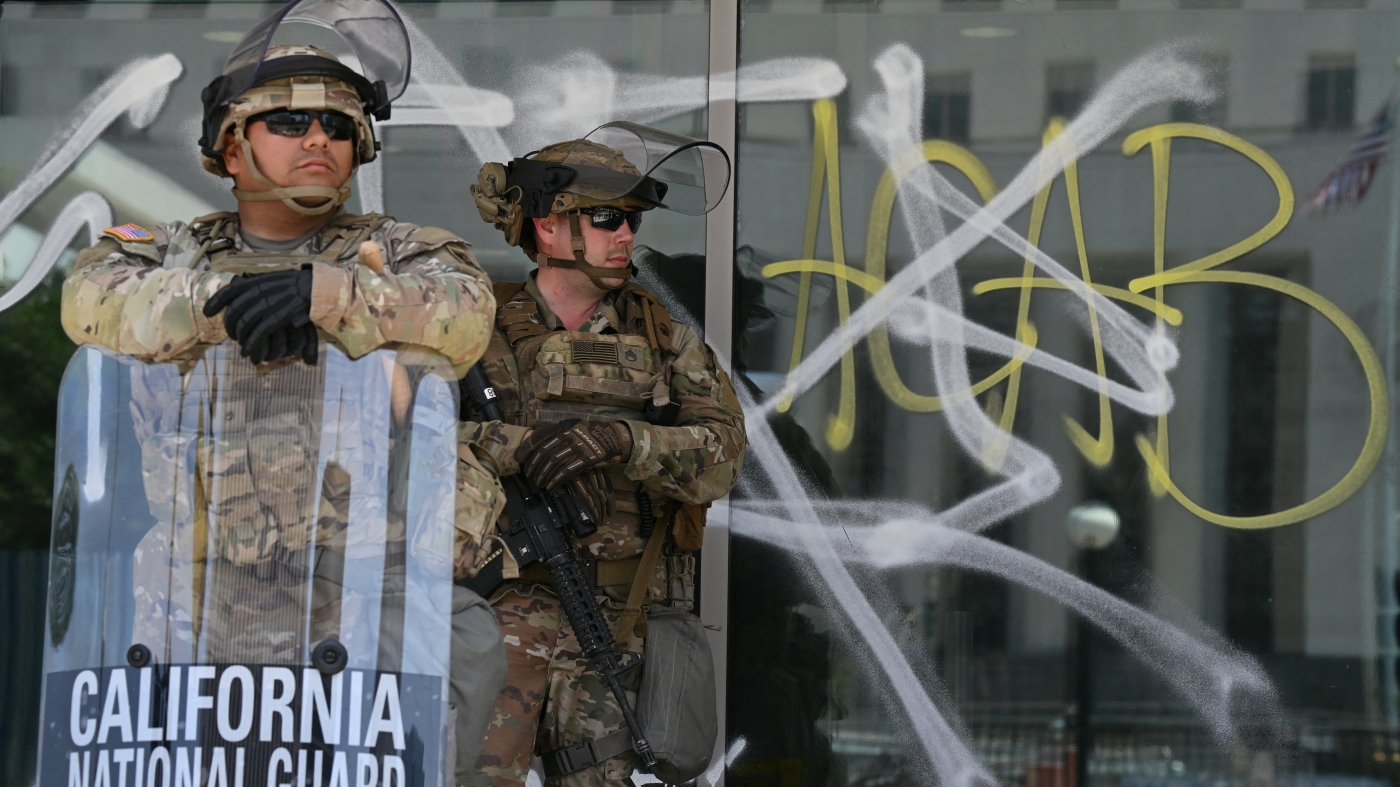President Donald Trump’s recent decision to deploy 2,000 National Guard troops to Los Angeles in response to immigration protests has stirred significant controversy and legal challenges, marking a rare and unprecedented federal intervention that bypassed the authority of California’s governor. This report delves into the key aspects and wider implications of this move, exploring why it represents a notable departure from traditional protocols, the reactions it has provoked, and the legal and political ramifications it carries.
An Unprecedented Federal Mobilization Without State Consent
Historically, the activation of National Guard forces within a state typically requires the consent of the respective governor, respecting state sovereignty and balance between federal and state powers. President Trump’s order to federalize and deploy California’s National Guard troops without Governor Gavin Newsom’s approval is the first such instance since the 1960s, breaking with decades of precedent.
Former military officials and experts emphasize that this move essentially “throws the entire playbook out,” as retired generals describe the abandonment of established norms designed to coordinate military response to domestic events within the framework of state-federal cooperation. This unilateral federalization of state troops challenges longstanding conventions that help maintain a check on federal authority and ensure that state leadership retains control over its own guard units in times of crisis.
Context and Rationale Behind the Deployment
The National Guard deployment was ordered amid growing protests targeting immigration enforcement policies and institutions, including Immigration and Customs Enforcement (ICE) operations. The Trump administration framed the mobilization as critical to protecting immigration enforcement actions and maintaining public order amidst escalating unrest.
Approximately 2,000 troops were authorized by the President, though only about 1,000 were reported to have been deployed by midday after the order. Federal authorities justified the heavy-handed approach by emphasizing the need to respond swiftly to lawlessness and ensure the safety of federal personnel and property, amid violent clashes that had taken place in certain areas of Los Angeles.
State Opposition and Legal Disputes
Governor Gavin Newsom openly opposed the deployment, asserting state authority and expressing concerns about militarizing responses to civil protests. He traveled to Los Angeles personally to oversee the California response and formally requested that President Trump return control of the National Guard troops to the state.
In response, California’s officials have initiated legal action against the federal government, filing lawsuits challenging the legality of the deployment. The state denounced the federal mobilization as “unlawful” and “inflammatory,” arguing that the President’s actions constitute an abuse of power by circumventing established procedures and state rights under the National Guard’s dual state-federal status.
Legal experts note that the disputed use of the 1807 Insurrection Act or related statutes invoked to justify federal control does create a complex constitutional conflict regarding the limits of presidential authority in domestic affairs. This legal battle will likely serve as a landmark case defining the boundaries of federal intervention in state military resources during civil unrest.
Broader Political and Social Implications
The federal deployment to Los Angeles is emblematic of the Trump administration’s broader strategy regarding protest movements and immigration enforcement, marked by a willingness to use military resources and federal authority assertively in contested urban settings. This approach directly challenges Democratic state governments that resist federal immigration policies and protest crackdowns.
Moreover, the presence of National Guard troops under federal command has escalated tensions on the ground. Reports of tear gas being deployed against protesters soon after the troops’ arrival illustrate how militarization can exacerbate conflicts, potentially inflaming public outrage rather than containing it.
Civil liberties advocates and organizations like the ACLU condemn the deployment as unnecessary and provocative, warning that such tactics risk undermining democratic norms and the right to protest. Conversely, supporters argue that firm federal action is essential to restoring order amid what they view as unchecked civil disorder threatening public safety.
Historical Significance
The event marks the most significant federalization of state National Guard troops against a governor’s will in over 50 years. Past instances of deploying the National Guard federally often came under different circumstances, usually involving insurrections or external threats, rather than domestic protests where state-federal consensus existed.
This breach in protocol signals a new phase in U.S. civil-military relations, one where the federal government may be willing to exert direct control over state military assets for political objectives. It raises serious questions about the potential for future federal-state conflicts in managing protests and civil unrest, especially in politically divided or oppositional states.
Conclusion: A Precedent with Enduring Consequences
President Trump’s deployment of the National Guard to Los Angeles without California’s consent stands as a watershed moment in U.S. domestic military policy. It disrupts established federal-state collaboration frameworks and triggers an unprecedented constitutional and legal confrontation.
The episode not only underscores the complexities of balancing public order with civil liberties amid contentious protest movements but also foreshadows potential shifts in how domestic military forces may be utilized in politically charged environments moving forward.
As California pursues legal remedies and societal divisions deepen, the deployment’s legacy will be measured by its impact on federalism, civil-military relations, and the political landscape surrounding protests and immigration enforcement in America. This incident cements a crucial debate over governance, authority, and the role of military power in the public sphere that will resonate well beyond the immediate moment.


